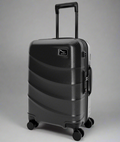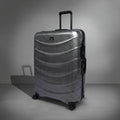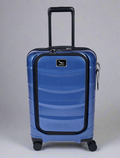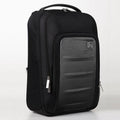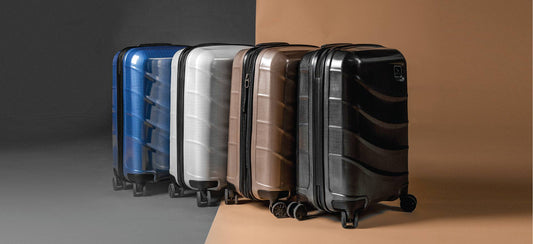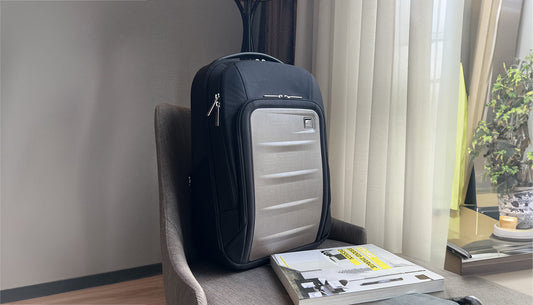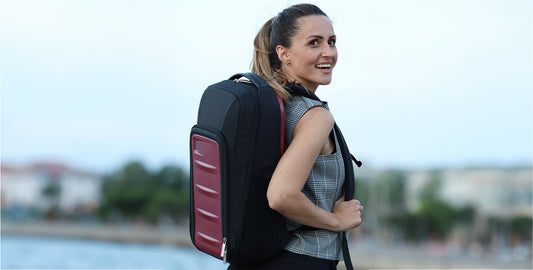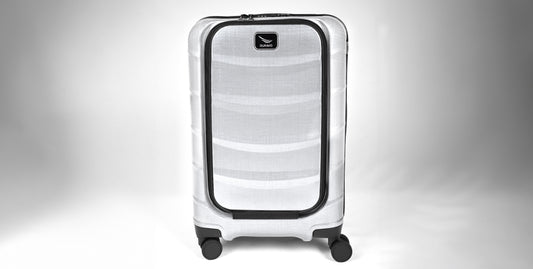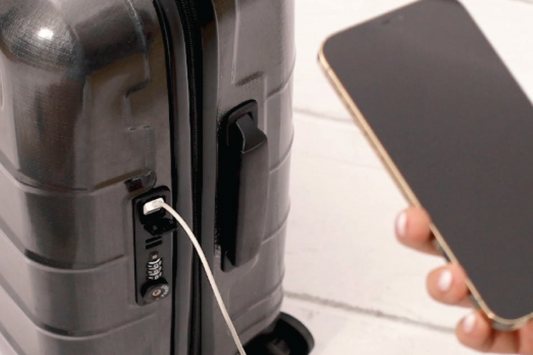Navigating TSA Carry-On Liquids: Your Guide To Stress-Free Travel
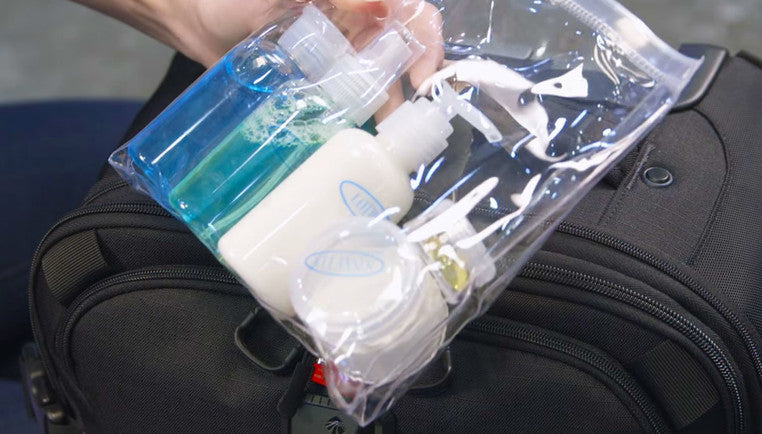
The knack of packing liquids for air travel revolves around the TSA carry-on liquids rule. Abiding by this guide promises swift pass-through airport security, saving you time and stress.
Duravo materializes the dream of worry-free journeys with our innovative carry-on suitcase. Simplifying TSA regulations, our cases cater to the exact specifications, ensuring you never have to bid farewell to your personal items at security checkpoints. Compact yet spacious, it leaves room to tote all your essentials without compromising organization or style.
Understanding the 3-1-1 Rule
The 3-1-1 rule forms the cornerstone of TSA policy on carry-on liquids. This mnemonic breaks down to 3.4 ounces (100 milliliters) of liquid per container, 1 quart-sized clear bag to hold containers, and 1 bag per passenger. Compliance with this is not optional. Security demands containers fit comfortably in the allotted bag, showcasing a traveler's commitment to safety and order.
People at security checkpoints often need clarification over this rule. Seasoned travelers have internalized this principle, leading to efficient and predictable security screenings. By adhering to the 3-1-1 formula, you express respect for the procedures designed to protect millions of people daily.
Packing Travel-size Toiletries
Conforming to the 3-1-1 guideline prompts a shift toward travel-size toiletries. These miniature versions of everyday essentials not only respect TSA rules but also save space. Manufacturers cater to these needs, offering vast ranges of toiletry products in compliant sizes. Acquiring these items before your trip spares you the hassle of last-minute airport purchases or the grief of surrendering your favorite products at security.
The logic behind regulating toiletries lies in risk management. Current technology still finds it challenging to efficiently differentiate between harmful substances and benign liquids in larger amounts. By limiting container size, the TSA mitigates potential threats. It's a simple act of conscious packing that contributes to the safety net of air travel. Keeping your toiletries compact, clear, and compliant translates to carefree coasting through checkpoints, leaving more time to relax before your flight.
Utilizing TSA-approved Containers
TSA-approved containers are a practical solution to the 3-1-1 constrain. These pre-measured containers ensure that your liquids never exceed permissible limits. Finding these specialized containers is easy as they're widely available in stores and online. Some even come in sets with a quart-sized clear bag, easing your pre-flight preparation.
TSA-approved containers offer you an additional advantage. They can be reused, unlike many travel-size toiletries that are discarded after use. This not only saves money over time but also promotes environmental consciousness. By reusing these containers, you can take your preferred products with you while staying compliant with TSA regulations.
Options for Medically Necessary Liquids
Specific liquid regulations accommodate medically necessary liquids. People with medical conditions or special dietary requirements can travel with larger quantities of liquids like medications, baby formula, food, and breast milk. However, these liquids must be declared to TSA officers at the checkpoint for inspection.
It's worth noting that this exception doesn't involve general beverages or toiletries but only applies to medically necessary liquids. Hence, the usual travel logistics still apply to standard travelers. Taking time to learn and understand these rules can help you better prepare for your journey and create a stress-free travel experience. Disruptions at security only interrupt your travel rhythm. Knowing these small details encourages smoother transitions through checkpoints, leaving you to enjoy your flying journey.
Keeping Liquid Medications Separate
Separation of liquid medications from regular toiletries is another consideration to bear in mind. The larger quantities allowed for these liquids, as mentioned earlier, necessitate their isolation for proper inspection. Medicines require separate handling and are subject to distinct security protocols that diverge from the standard 3-1-1 rule. Keeping them separate helps the screening process move along quickly, with no unnecessary confusion or delays.
Organizing your carry-on in this manner goes beyond just following rules. It is also a way to maintain the integrity of your medications, preventing accidental spillage or contamination from other items in your bag. By giving liquid medications their exclusive space, you ensure they remain in optimal condition throughout your travel.
Storing Liquids Properly for Screening
How you store your liquids can make a world of difference during screening. First off, a clear, quart-sized plastic bag is typically used to contain travel-sized toiletries compliant with the 3-1-1 rule. Having your liquids in a see-through container eliminates the need for further inspection, allowing security officers to verify compliance effortlessly.
The proper arrangement of your bag also comes into play here. Arrange your toiletries and liquid medications in such a way that they are easy to remove and place back into your luggage. The quicker the screening officers can access and inspect the containers, the faster you can proceed to your boarding gate. It's all about making the process as smooth as possible for both you and the airport security. Guiding yourself with these tips can save you time and spare you headaches, ushering in an era of stress-free, enjoyable travel.
Pre-check Benefits for Liquids
The TSA PreCheck program significantly simplifies the process of traveling with liquids. For those enrolled, the stringent adherence to the 3-1-1 rule can be relaxed, offering a more convenient travel experience. This doesn’t mean that PreCheck travelers can bypass all the rules regarding liquids, but the program allows them to keep their compliant liquids in their carry-ons without having to separate them for screening. This aspect of PreCheck not only speeds up the checkpoint process but also reduces the hassle of unloading your items into bins.
PreCheck membership encourages a more streamlined and efficient screening process. While all liquids must still comply with the 3-1-1 rule, the advantage lies in the ease of passing through security. This convenience becomes especially evident during busy travel periods where time saved can mean a less rushed or more comfortable wait before your flight. The benefit extends to all liquid medications, including those medically exempt from the 3-1-1 limit, as PreCheck passengers are not required to declare these items separately, thereby accelerating their passage through security checkpoints.
Exempt Items from the 3-1-1 Rule
Certain liquids receive a pass when it comes to the 3-1-1 rule, most commonly due to medical or dietary needs. Medications, breast milk, and infant formula stand out as the primary categories for exemptions, recognizing the necessity for travelers to carry these items in quantities greater than the standard allowance. These exceptions are made with the understanding that health and wellness, especially during travel, should not be compromised. The TSA has made accommodations to ensure this, with guidelines that permit these liquids to be packed in reasonable quantities necessary for the trip.
However, it's about more than just being able to bring more of these liquids. One must also consider the process at the airport security point. To benefit from the exemption, passengers should keep these liquids separately from their quart-sized bag of liquids, gels, and aerosols. Clear communication with security officers is necessary to ensure clarity when presenting these exempt items. It's also pertinent to note that while these items are exempt from the standard liquid restrictions, they are not exempt from screening. Security agents may need to open the containers to screen the liquids, and occasionally, additional steps may be necessary to clear the items.
Travelers with medical conditions that require larger quantities of liquids have specific guidelines to follow. These guidelines aim to balance the facilitation of travel needs with security mandates. Travelers should inform the TSA officer at the start of the screening process about any medically necessary liquids that do not need to adhere to the 3-1-1 limits. Proper identification, such as a prescription label or a doctor's note, can assist in the verification process. This little bit of preparation can go a long way in ensuring a smooth transition through airport checkpoints. It's this thoughtful consideration of passengers' needs that mitigates potential stress, allowing individuals to carry out their journey with greater peace of mind and minimal disruption.
Preparing Baby Food and Formula
Traveling with an infant introduces new dimensions to journey planning, particularly when it concerns nourishment, like baby food and formula. The TSA provides exemptions from the 3-1-1 rule for these items, acknowledging their importance for a child's well-being during flights. Parents or guardians are thus allowed to bring a reasonable quantity of baby food or formula to ensure their infant remains fed and content throughout their travel. This leniency is grounded in the understanding that infants and toddlers have specific dietary needs that must be met with readiness and flexibility, which the standard liquid restrictions could hinder.
To take full advantage of these exemptions, careful preparation is vital. When packing, keep all baby nourishments easily accessible and separate from your other belongings. This practice assists TSA agents in swiftly identifying these items during the security screening process, facilitating a smoother checkpoint experience. It’s recommended only to carry what is deemed necessary for the duration of the journey, plus a little extra for unforeseen delays. Despite the exemption, each container of baby food, breast milk, or formula may be subject to additional screening. Transparent communication with security personnel about your carry-on contents can aid in expediting the process, helping you and your baby proceed with minimal delay.
Opting for Solid Toiletries
As convenient as liquid toiletries are, they present certain challenges for travelers. The limitation imposed by the 3-1-1 rule often restricts the number of personal care items one can carry, leading many travelers to leave behind their preferred brands or quantities. However, an often-overlooked solution to this challenge is the use of solid toiletries. Solid toiletries come in many forms – bars of soap, shampoo bars, conditioner bars, solid deodorants, and even toothpaste tablets, and they offer a user-friendly and travel-friendly alternative that can bypass the constraints of the liquid rules.
Opting for solid toiletries provides a host of benefits. Foremost is their exemption from the TSA liquid policies. Being non-liquid, these toiletry forms get the green light from TSA and don't have to fit into a quart-sized bag. This establishes more leeway in your packing strategy, granting room for other necessities within the 3-1-1 limit. It also promotes a smoother, hastier security check process due to the eliminated need for separate screenings for liquids. Apart from the TSA-related advantages, one can't ignore the benefit of sustainability with solid toiletries. Many of these products come in minimal or biodegradable packaging, making your travels a little more eco-friendly.
But even as you opt for solid toiletries, it's crucial to pack them properly. Consider using a lined pouch or container to keep them separate from other items in your bag to prevent any residue transfer. Ventilation is key, allowing the bars to dry between uses and prolonging their lifespan. The transition to solid toiletries may be unfamiliar at first, but over time, you'll appreciate the convenience they offer, not only for travel but also for daily life. Opting for solid toiletries can be a game-changer, freeing you from the inconvenience of complying with the 3-1-1 rule, speeding up your journey through security checkpoints, and supporting an environment-conscious lifestyle.
Tips for Smooth Security Checks
Navigating your way through airport security can be effortless with a bit of preparation. Begin by acquainting yourself with the regulations pertaining to carry-on items – knowing what can and cannot be brought on a plane is a fundamental step. Never overlook the power of organization: have your boarding pass and identification within easy reach, and ready your electronics for quick access as they typically need to be scanned separately. Your liquids, unless you are a TSA PreCheck member, should conform to the 3-1-1 rule and be appropriately contained within a transparent, quart-sized bag. Ensuring your items are systematically ordered within your luggage can save precious moments during the screening process.
Arrival time can also affect your trip through security. Coming to the airport well ahead of your flight can cushion any unforeseen delays encountered during screening. Wear clothing and shoes that are easy to remove if needed, and consider leaving behind jewelry or belts that might trigger a scanner. Remember that personal items like wallets and phones should be placed in your carry-on bag before passing through metal detectors to prevent them from being left in the bins. By having a well-thought-out process, you can reduce or altogether sidestep the common hurdles that can cause setbacks at airport security, leading to a fluid transition from the check-in counter to your departure gate.
Organizing Liquids for Easy Access
Strategic packing goes a long way in making your journey through airport security hassle-free. Begin by laying out all the liquids you plan to carry. Group them by necessity: toiletries, medications, and so forth. This process will not only help you identify what's essential but also ensure you're within the TSA carry-on liquid limits. Once sorted, transfer these liquids into a clear, quart-sized bag. Using a bag with a solid closure prevents spills and is reusable, benefiting both the environment and future travel.
Remember, not all items in your carry-on need to fit in this bag—only those classified as liquids, gels, creams, aerosols, and pastes. Medications, baby formula, and certain food items are exceptions; declare these items at the checkpoint for separate inspection. Packing your quart-sized bag on top or in an easily accessible part of your carry-on means less rummaging at security. This simple organization trick will streamline your process through checkpoints, keeping your travel stress-free.
Embrace Easy Travel with Duravo
For those who prioritize space conservation, Duravo offers the smart solution of our Venture Slim backpack. With carefully designed compartments, it secures your liquids and is functional and aestheticly pleasing. Despite its slim appearance, it accommodates necessities comfortably, stumbling upon the perfect balance between minimalism and practicality.
Whether you're a suitcase type or a backpack person, we've got you covered. Travel smarter, sleeker, and simpler with Duravo.
